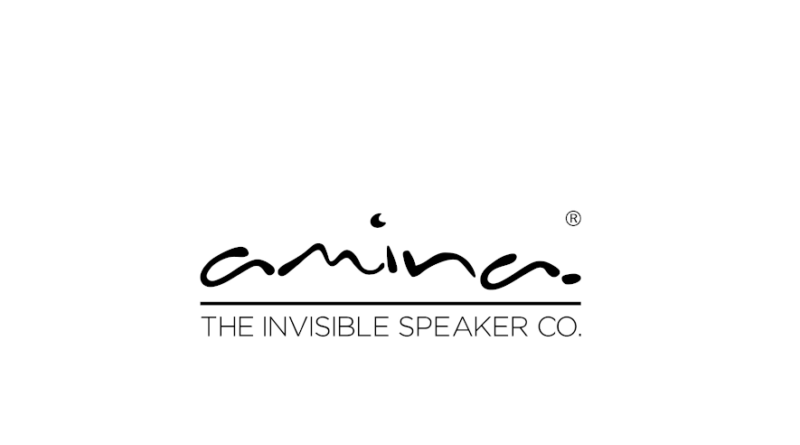I recently sat down with Keith Vanderkley of Amina Technologies. As VP Sales Americas, I wanted to hear from Keith about what’s happening with the company and where they’re headed.
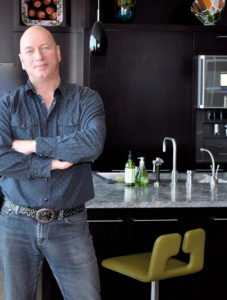
Maureen Jenson: Amina started in the UK 20-years ago. Tell us more about your history?
Keith Vanderkley: Amina was started by our founder and Managing Director Richard Newlove on the notion that there had to be a different way that we could create high quality sound, away from the conventional loudspeaker using a planar panel in order to create a designer-friendly speaker solution.
Prior to founding Amina, Richard was part of the speaker development team for Wharfedale UK, which acquired Mission Loudspeaker in 1992. Around that time the UK Ministry of Defense developed a helicopter trainer in which they tried to get an as-realistic-as-possible experience, which included the use of exciters on 1-meter long steel rods to induce vibration and sound in its hull.
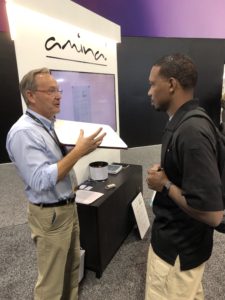
Amina founder Richard Newlove
That germ of an idea and subsequent involvement by the Wharfedale and Mission teams, formed the basis of a very successful patent created by the group. That group eventually became known as NXT, and several manufacturers jumped on-board with different products after licensing access to the technology from NXT.
In 1999 Richard started Amina Technologies under license from NXT as a developer and manufacturer of flat panel transducers, and upon request from a German designer, created the first architecturally ‘speakerless’ audio solution by creating an in-wall mounted panel transducer that could be completely plastered over without degradation to the sound. That was back in 2001 and quite literally cemented Amina’s future in developing completely invisible audio solutions, be it in drywall, plaster, mill work, natural or man-made veneers and in interior or exterior applications.
MJ: There are plenty of sound panels on the market. What makes your sound panel technology different?
KV: Amina is not a “loudspeaker manufacturer” in the traditional sense. That’s exactly what we did not want to be. We never intended to replace a very high-end listening system. There is nothing wrong with a good set of conventional loudspeakers properly matched to an amp in a controlled acoustic environment aimed at the listener. However, what we are seeking to improve upon is the myriad of other applications that frequently leave something to be desired.
So many integrators are using loudspeakers in applications for which the transducers were never designed for, simply because manufacturers changed the enclosure design to fit the décor requirement or trend, not the acoustic application. And though they might allow for angling the drivers, the average wall and ceiling speaker remains directional, phase dependent and unable to fill a room evenly with sound.
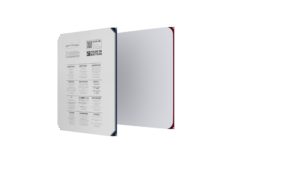
Fronts of Mobius and EDGE series
We have a clear vision of what an invisible speaker should be, and we’ve continued our R&D to the point where we can control the sound panel’s behavior to get an audio quality that is truly unmatched, as well as providing core solutions for both drywall and veneers. From the outset we looked at ways to create a speaker that would be able to fill a room with a blanket of sound rather than spots of sound, with minimal degradation to quality of the original sound source.
To do so meant we needed to think like an instrument builder rather than adapting conventional loudspeaker technology to do something it was not designed for. Why is it that a violin can cover a room corner to corner, very evenly and without room reflections destroying the original timbre of the instrument, and multiple guitars or pianos can sum together without interfering with each other?
That is because these instruments are based on the principles of sympathetic resonance, creating amplitude through the sum of ten’s to thousands of tiny pockets of sympathetic vibrations from a soundboard. The sound source is spread out over a larger space, a “spread source”, and enters the room as multiple individual sound sources, spreading out in all directions to fill the room making it non-directional.
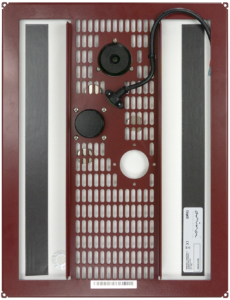
Edge 5ir rear panel
The same cannot be said if we play a recording of that violin from a conventional cone loudspeaker, because a cone speaker turns that violin, a “spread source”, into a “point-source” where sound originates as a single point sound beam that requires high amplitude and now exhibits directivity and phase. This colors the sound, affecting intelligibility and sound quality as it travels further in the room.
To this, the basis of the Amina® loudspeaker is very much like any instrument that uses a soundboard. It is based around a planar soundboard, which is excited by (patented) electronic neodymium exciters (transducers) which set in motion myriads of tiny sympathetic vibrations that excite adjacent air molecules. In combination with Amina’s tuning and Opti-drive®, Opti-damping® and ToneRelief® techniques, the speaker produces full-bodied, omni-directional sound that fills the room evenly, even those acoustically challenged by hard surfaces, glass walls and obstructions.
Stay tuned next week when I ask Keith about Amina’s manufacturing process and minimizing environmental impact and their findings at CEDIA EXPO last September. (part 2 here)

